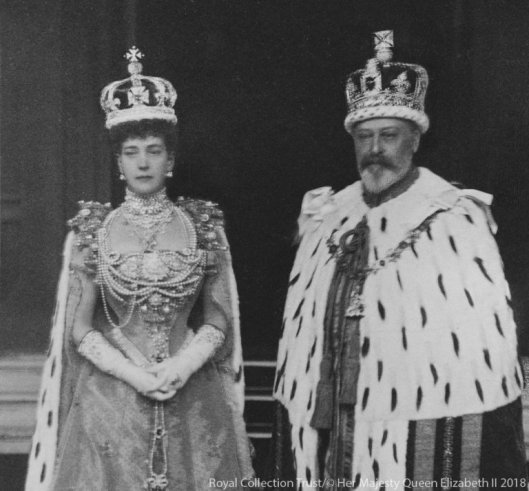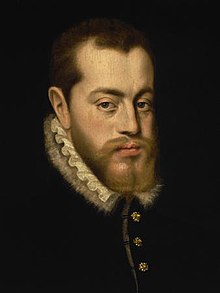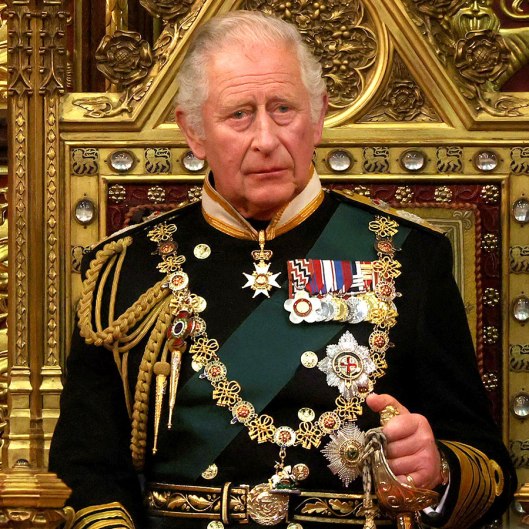Today begins a new series examining the titles of Royalty and Nobility within the British Monarchy.
I will begin by defining what a monarchy is and also the role of the sovereign King or Queen. Although this definition of monarchy can also fit that of an Emperor, reigning Grand Duke or Prince, in this instance it defines a King or Queen Regnant.
King is the title given to a male monarch. The English term king is derived from the Anglo-Saxon cyning, which in turn is derived from the Common Germanic *kuningaz. The Common Germanic term was borrowed into Estonian and Finnish at an early time, surviving in these languages as kuningas.

King George VI of the United Kingdom
A monarch is a head of state for life or until abdication, and therefore the head of state of a monarchy. A monarch may exercise the highest authority and power in the state, or others may wield that power on behalf of the monarch.
Usually a monarch either personally inherits the lawful right to exercise the state’s sovereign rights (often referred to as the throne or the crown) or is selected by an established process from a family or cohort eligible to provide the nation’s monarch. Alternatively, an individual may proclaim themself monarch, which may be backed and legitimated through acclamation, right of conquest or a combination of means.
If a young child is crowned the monarch, then a regent is often appointed to govern until the monarch reaches the requisite adult age to rule. Monarchs’ actual powers vary from one monarchy to another and in different eras; on one extreme, they may be autocrats (absolute monarchy) wielding genuine sovereignty; on the other they may be ceremonial heads of state who exercise little or no direct power or only reserve powers, with actual authority vested in a parliament or other body (constitutional monarchy).

King Edward VII and Queen Alexandra of the United Kingdom
A monarch can reign in multiple monarchies simultaneously. For example, between 1603 and 1707 the monarch ruled England and Wales, Scotland and Ireland. Although the monarch was the sovereign of these states they were not politically united and they continued as separate states, they shared the same monarch through personal union.
There are two types of Kings. A King Regnant and a King Consort. Regnant is a term that means reigning and holding sovereign power. In a Constitutional Monarchy sovereign power is vested in the reigning monarch even if that power is executed by other governmental figures such as a Prime Minister.
In British history there has been only one instance of a King Consort in England; that was King Felipe II of Spain the husband of Queen Mary I of England.
In Scotland King François II of France and Henry Stuart, Lord Darnley, were King Consorts to Mary I of Scotland.
When Queen Mary I of England came to the throne as the first Queen Regnant of England, under the English common law the doctrine of jure uxoris, the property and titles belonging to a woman became her husband’s upon marriage, and it was feared that any man she married would thereby become King of England in fact and in name.
That is what happened. Felipe II of Spain was technically a “King Consort” but under the terms of Queen Mary’s Marriage Act, Felipe II was in practice a joint sovereign to be styled “King of England” in all official documents (including Acts of Parliament) were to be dated with both their names, and Parliament was to be called under the joint authority of the couple, for Mary’s lifetime only.

Queen Elizabeth II of the United Kingdom
That’s one of the reasons Elizabeth I never married, she did not want to share power with her husband. William III was a joint sovereign with his wife Mary II. George of Denmark, not an ambitious man, didn’t push to be made King Consort.
This was challenged with Queen Victoria who wanted to make Albert her King Consort but Parliament squashed that idea. In 1858 Queen Victoria created the title Prince Consort for Prince Albert and this is the only time so that this title was used for the husband of a Queen Regnant.
That brings us to Prince Philip, Duke of Edinburgh. Jure uxoris had long ceased to being a factor and tradition had evolved to where a Consort of a Queen Regnant wasn’t made a King Consort. Philip was created Duke of Edinburgh on the eve of his marriage to Princess Elizabeth and, as Queen, created him a Prince of the United Kingdom in his own right, making the title Prince Consort unnecessary.
When it comes to addressing either a King Regnant or a King Consort there is absolutely no difference, no distinction, whatsoever and both are simply refered to as “His Majesty the King” despite the differences.
As there are two types of Kings there are also two types of Queens.* The first type of Queen is called a Queen Regnant. A Queen Regnant is a female monarch who rules in her own right and usually becomes queen by inheriting the throne upon the death of the previous monarch.
Some examples of Queen Regnants are: Queen Elizabeth II (1952 – 2022), Queen Victoria (1837 – 1991) and Queen Mary II (1689 – 1694).
The next type of Queen is a Queen Consort. Simply, A Queen Consort is the wife of a reigning king. Let me state further, all wives of reigning Kings in British history have been a Queen Consort.

King Felipe II of Spain and England
A Queen Consort usually shares her spouse’s social rank and status. She holds the feminine equivalent of the king’s monarchical titles and may be crowned and anointed, but historically she does not formally share the regnant’s political and military powers, unless on occasion acting as regent.
When it comes to addressing either a Queen Regnant or a Queen Consort there is absolutely no difference, no distinction whatsoever, and both are simply refered to as “Her Majesty the Queen” despite the differences.
* There is also a Dowager Queen and a Queen Mother. A Queen Dowager is a former Queen Consort who is the widow of a king, and a queen mother is a former Queen Consort who is the mother of the current monarch. Queen Elizabeth II’s mother was a former Queen Consort who didn’t care for the title Queen Dowager and instead took the title of Queen Elizabeth, the Queen Mother.

His Majesty the King
Queen Adelaide, wife of King William IV and was known as a Dowager Queen (or Queen Dowager) after his death in 1837. Queen Alexandra and Queen Mary were the wives of King Edward VII had King George V respectively and despite being Queen Mothers neither formally took that title.
Just to restate when addressing a monarch of the United Kingdom whether they are a King Regnant, King Consort or a Queen Regnant or a Queen Consort they are addressed as His/Her Majesty the King or Queen and no distinction is made between a Regnant or a Consort.











